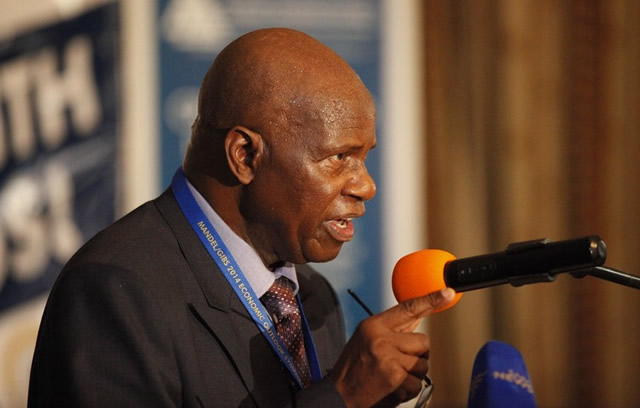‘Zim needs to increase platinum production’

Sifelani Tsiko
Zimbabwe needs to increase total platinum production by an additional 170 000 ounces, which will require an investment of around $1 billion, to sustain a Base Metal Refinery (BMR) in the country.
Zimplats general manager (processing) Louis Mabiza told delegates at the just ended 3rd international workshop on Mineral Processing and Beneficiation which was organised by the Non-Aligned Movement Science and Technology Centre in partnership with two other government ministries, that Zimbabwe needed to produce a minimum of 500 000 Pt oz/ yr to justify the establishment of a Base Metal Refinery in the country.
“A minimum production rate of 500 000 Pt oz/yr is required and we must have enough smelting and converting capacity for the BMR to be in place,” he said.
“We need to increase platinum production by 170 000 ounces and this requires investment as high $1 billion.
Mabiza said the refinery of the BMR itself will require a capital injection of $2,8 billion.” For this to happen, Mabiza said, it would need joint venture strategies amongst PGM producers and foreign investors.
Mining experts say platinum refining process goes through two significant stages, in the base metal refinery – which separates base metals such as nickel and copper – and then the precious metal refinery which processes the various platinum group metals and gold to high levels of purity.
Zimbabwe, which has the world’s second largest platinum reserves after South Africa, has given miners two years to set up a platinum group metal refinery.
At present, processing is done in South Africa and Government says this has led to loss of revenue and jobs.
The local platinum industry claims it is approaching the 500 000 ounce per annum levels that are required for a BMR to be economically viable.
Zimbabwe, which holds the second largest platinum reserves in the world after South Africa, is currently producing 430 000 ounces of platinum annually from three mines which are Zimplats, Unki and Mimosa.
Mabiza said other major hurdles the industry had to contend with, included the need for investment to expand the country’s electricity generating capacity.
He said demand for power by the PGM industry is expected to grow to about400MW at a time the country was battling to meet local demand.
The Zimplats mining official said other major hurdles to the establishment of a BMR included the increasing cost of operations (royalties, raft of other fees), Amendments to the Mines and Minerals Act and lack of clear guidelines to the indigenisation and economic empowerment programme.
In addition, he said the need to train more personnel projected to be between 3 000 and 4 000 for the PGM industry by 2017 and to expand infrastructural development (electricity, water, roads, housing health educational facilities) were some of the major challenges.
Policy consistency and predictability, competitive investment environment and fiscal regime, availability of capital finance and working capital, adequate appropriately priced and reliable power supply, stable metal pricing were also a major handicap.
Mabiza said poor understanding of mining industry contribution to economy, costs of mining and production (levies and taxes), research, development and innovation, training and skills development need to factored in as well as the country moves to set up a BMR.











Comments